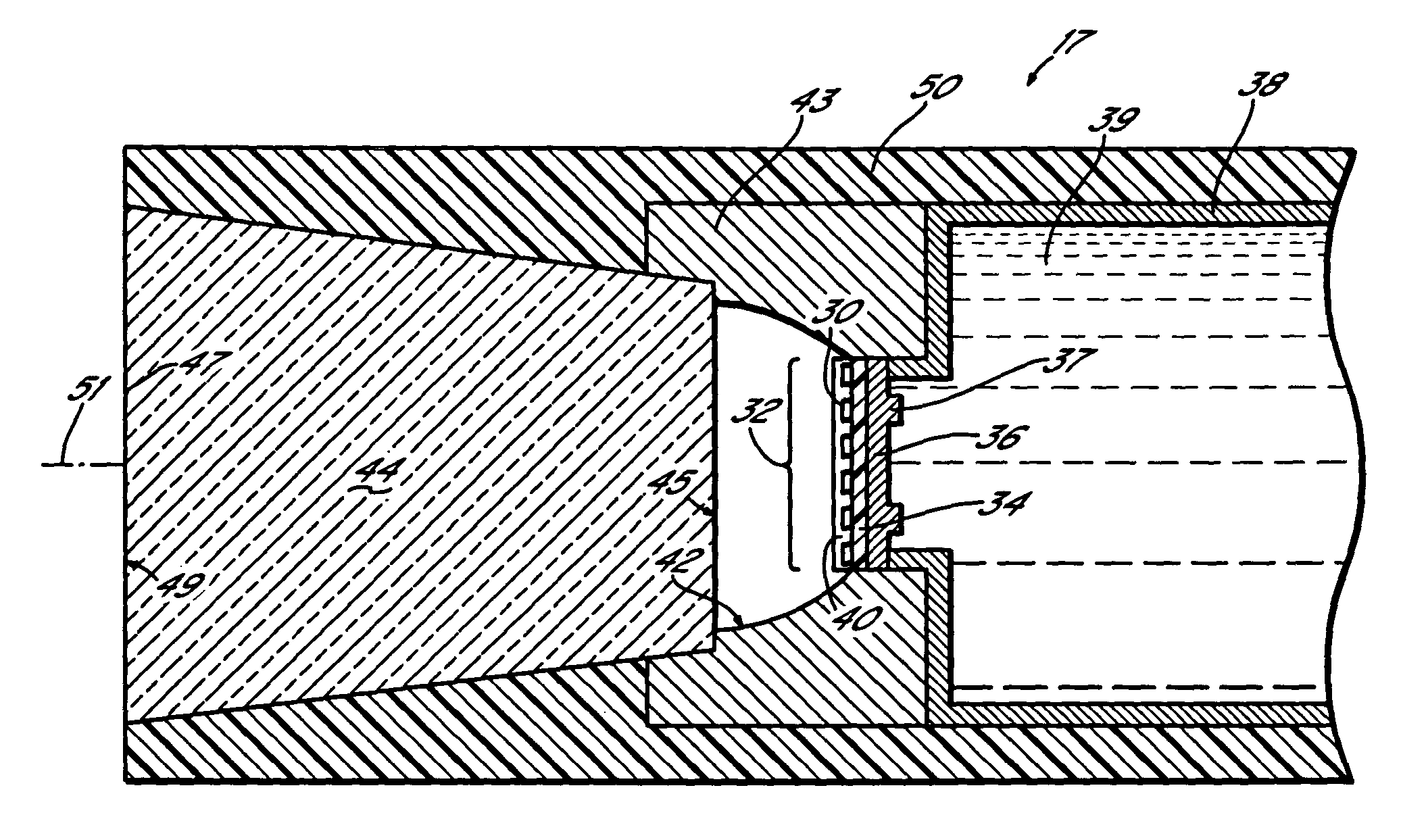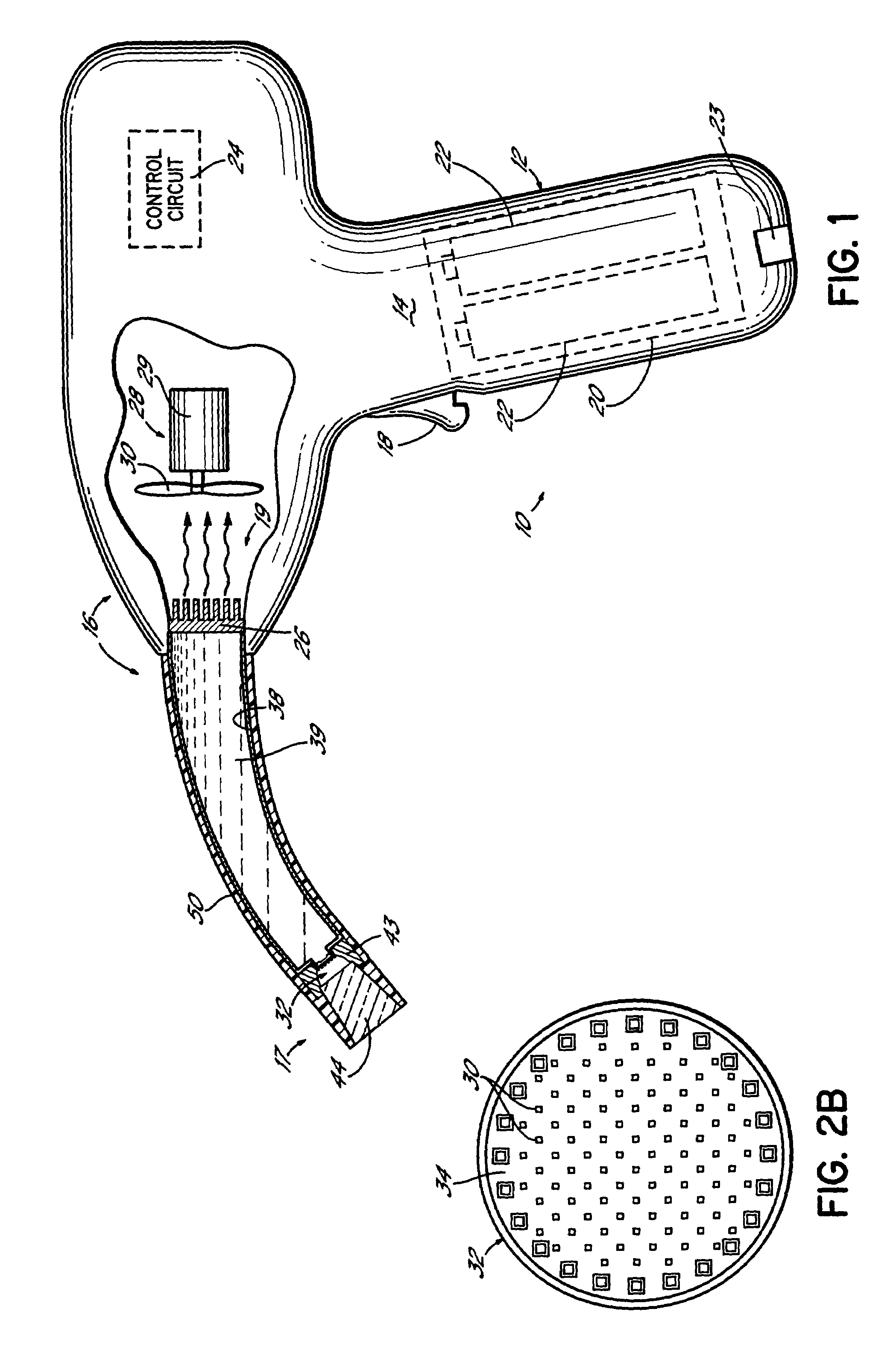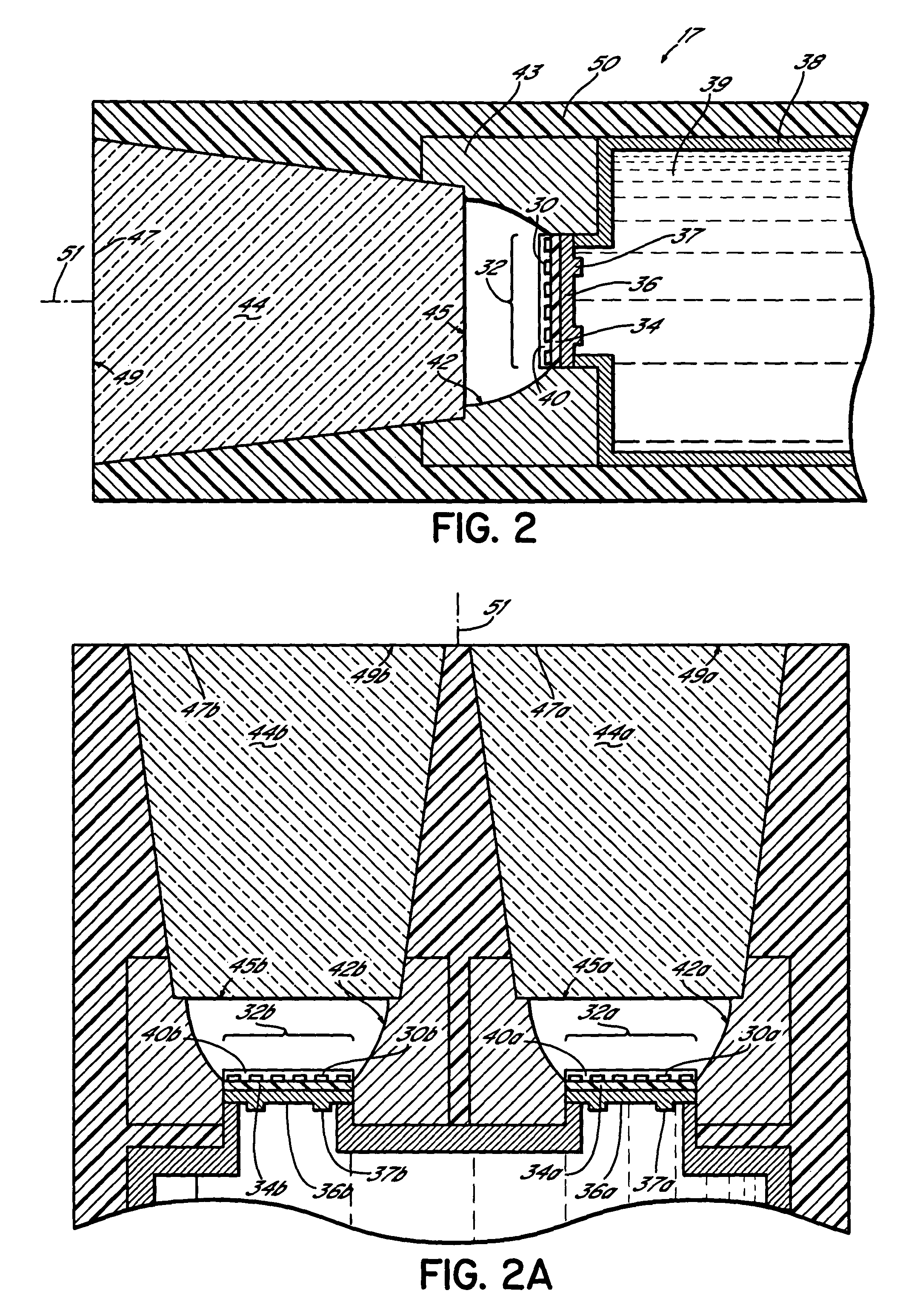Apparatus and method for curing materials with light radiation
a technology of light radiation and apparatus, applied in the field of apparatus and method for curing materials with light radiation, can solve the problems of inability to filter harmful wavelengths of blue light, inability to accurately detect harmful wavelengths of light, and inability to detect harmful wavelengths, etc., to achieve efficient and efficient transmission and effective and efficient collimation of light
- Summary
- Abstract
- Description
- Claims
- Application Information
AI Technical Summary
Benefits of technology
Problems solved by technology
Method used
Image
Examples
Embodiment Construction
[0042]FIG. 1 illustrates one embodiment of a curing light device or curing light for curing light-curable compounds such as dental compounds in accordance with the aspects of the present invention. In FIG. 1, device 10 includes a housing 12 which is to be manipulated for curing. Housing 12 is generally gun-shaped and includes a handle portion 14 and a barrel portion 16. The operator, such as a dentist, grips housing 12 around the handle portion 14 and directs the barrel portion 16 in the direction of the tooth surface (or other work surface) and compound to be cured (not shown). For curing dental filling and coating compounds, the dentist would generally position at least part of the barrel portion in the mouth of a patient with a radiating end 17 of the barrel portion pointing at a particular tooth or teeth. The handle portion 14 includes an operational trigger switch 18 which is operably coupled to a power supply 20 and / or control circuit 24 for selectively operating the device an...
PUM
| Property | Measurement | Unit |
|---|---|---|
| acceptance angle | aaaaa | aaaaa |
| output power | aaaaa | aaaaa |
| output power | aaaaa | aaaaa |
Abstract
Description
Claims
Application Information
 Login to View More
Login to View More - R&D
- Intellectual Property
- Life Sciences
- Materials
- Tech Scout
- Unparalleled Data Quality
- Higher Quality Content
- 60% Fewer Hallucinations
Browse by: Latest US Patents, China's latest patents, Technical Efficacy Thesaurus, Application Domain, Technology Topic, Popular Technical Reports.
© 2025 PatSnap. All rights reserved.Legal|Privacy policy|Modern Slavery Act Transparency Statement|Sitemap|About US| Contact US: help@patsnap.com



